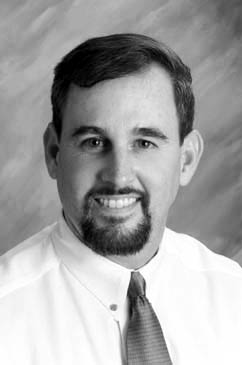Friday, March 18, 2005
Cold War “containment” architect dies
George Frost Kennan
1904-2005
1904-2005
George Frost Kennan, the man credited with authoring the United States’ policy of “containment” during the Cold War, passed away at his home in Princeton, Thursday night. He was 101.
“Kennan was the man to whom the White House and the Pentagon turned when they sought to understand the Soviet Union after World War II,” write Tim Weiner and Barbara Crossette in THE NEW YORK TIMES. “He conceived the cold-war policy of containment, the idea that the United States should stop the global spread of communism by diplomacy, politics and covert action - by any means short of war.”
Born in Milwaukee, Wisconsin, February 16, 1904; Kennan was the son of attorney Kossuth Kent Kennan and Florence James.
As a boy, Kennan attended St. John's Military Academy in Delafield, Wisconsin. There he excelled in history, literature, and English. He was also elected by his peers to the rank of cadet lieutenant and senior class poet. He later would self-describe his boyhood personality as “oddball, not eccentric, not ridiculed or disliked, just imperfectly visible to the naked eye.” As a young man, he attended Princeton University, earning an A.B. degree in 1925. The following year, he entered U.S. Foreign Service.
Kennan initially served as vice consul in Switzerland and Germany. From 1928 through 1929, he served in the countries of Estonia, Latvia, and Lithuania. In 1930, he earned a diploma for “Oriental Languages” from the Berlin Seminary.
In 1933, President Franklin Roosevelt officially recognized the Soviet Union and subsequently dispatched to Moscow America’s first ambassador, William C. Bullitt. The latter chose Kennan to be a member of his new embassy staff. In this capacity, Kennan was able to develop strong opinions as to the global implications of Stalinism, including its executions and bloody purges, death threats against dissidents, and concentration camps. He also developed an uncanny ability to discern the difference between the Soviet Union’s official hostility toward the West and its unofficial cordial diplomacy.
In 1937, Ambassador Bullitt was replaced by Joseph E. Davies, a respected democrat who primary task was to develop goodwill between the two nations in order to lay the groundwork for a possible future alliance. Kennan, who had been privy to an insiders peek at the dark side of Stalinism refused to remain in Moscow under Davies. He briefly returned to Washington, but was soon dispatched to Prague. There he witnessed the Nazi annexation of the Sudetenland.
When Germany invaded Poland in 1939, Kennan transferred from Prague to the American embassy in Berlin. When the U.S. entered the war in December 1941, Kennan and his fellow embassy staffers were detained and prohibited from leaving Germany until May 1942.
Kennan’s next post was as chargé d'affaires of the U.S. mission to Portugal in Lisbon.
In 1944, Keenan returned to Moscow where he served as minister-counselor until 1946. He then returned to the U.S. where he served on the faculty of the National War College. In 1947, he was named chairman of the State Department’s Policy Planning Committee.
In July, the quarterly publication, Foreign Affairs, ran a piece entitled, “The Sources of Soviet Conduct.” The article, published by an anonymous writer under the pseudonym “X,” became the basis for American policy toward the Soviet Union. The article offered a model of “containing” the Soviets which would remain U.S. policy throughout the Cold War. The article stated, “The main element of any United States policy toward the Soviet Union must be that of a long-term, patient but firm and vigilant containment of Russian expansive tendencies.” The author was later revealed to be Kennan.
Though Kennan never served a day in the CIA, he also is considered to be the great architect of the Agency’s covert action arm. In June 1948, Kennan drafted a National Security Directive which ultimately provided for the establishment of the CIA’s storied Office of Policy Coordination.
In 1950, Kennan temporarily left government service in order to conduct research at Princeton University’s Institute for Advanced Studies. In May 1952, he was named ambassador to the Soviet Union. However, critical comments he made about Soviet treatment of Western diplomats forced the Soviets to declare him “persona non grata” in October. In 1953, he returned to Princeton. From 1957 to 1958, he taught at Oxford University.
In 1961, President John F. Kennedy appointed Kennan ambassador to Yugoslavia. He served in that capacity until 1963. He then held a variety of academic posts including a professorship at Princeton (1964-1966), a university fellowship in History and Slavic Civilizations at Harvard (1966-1970), and a fellowship at Oxford’s All Souls College (1969). He also served as president of both the National Institute of Arts and Letters (1965-1968) and the American Academy of Arts and Letters (1967-1971).
Kennan authored many books (winning two Pulitzers), and he is the recipient of numerous national and international awards, including the Presidential Medal of Freedom and the Albert Einstein Peace Prize.
For more information on George Kennan, see ENCYCLOPEDIA OF THE CENTRAL INTELLIGENCE AGENCY.
“...an excellent reference source...engaging...practical...a useful addition to reference collections for all libraries.”
--- American Reference Books Annual
“Smith's resource contains little known facts that will delight and entertain...tight, well-organized information presented in an easy-to-read format. Smith has compiled an exhaustive resource of CIA trivia that will answer some of the most obscure questions.”
--- Florida Times-Union
“Engagingly written, the book is eminently readable and informative, not to mention fun to browse. It should draw the casual reader and researcher alike as a useful and convenient source of background information. As befitting a good reference title, little known facts will delight the curious...belongs in all libraries with strong current affairs collections.”
--- Reference Reviews
WTSjr
